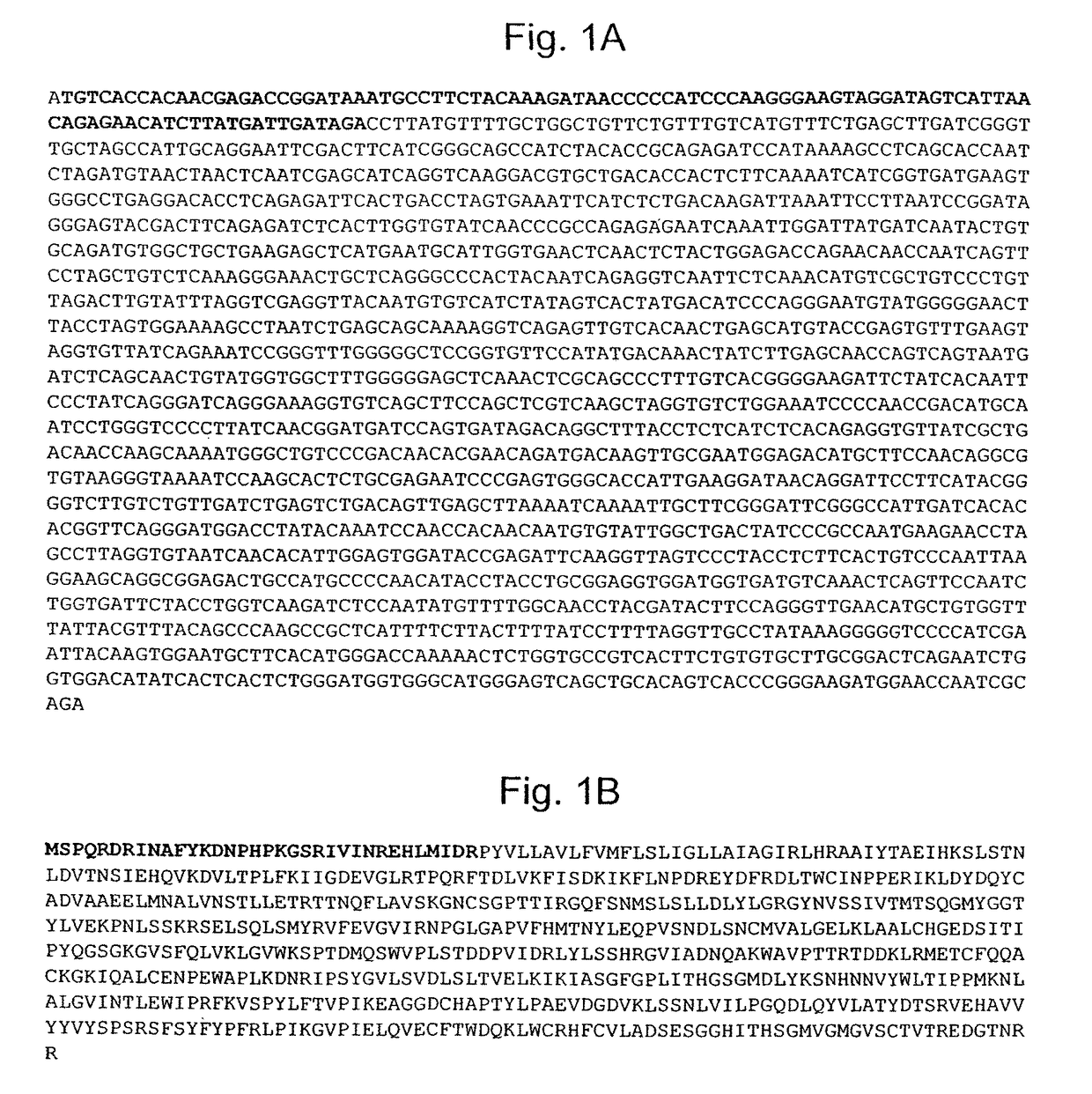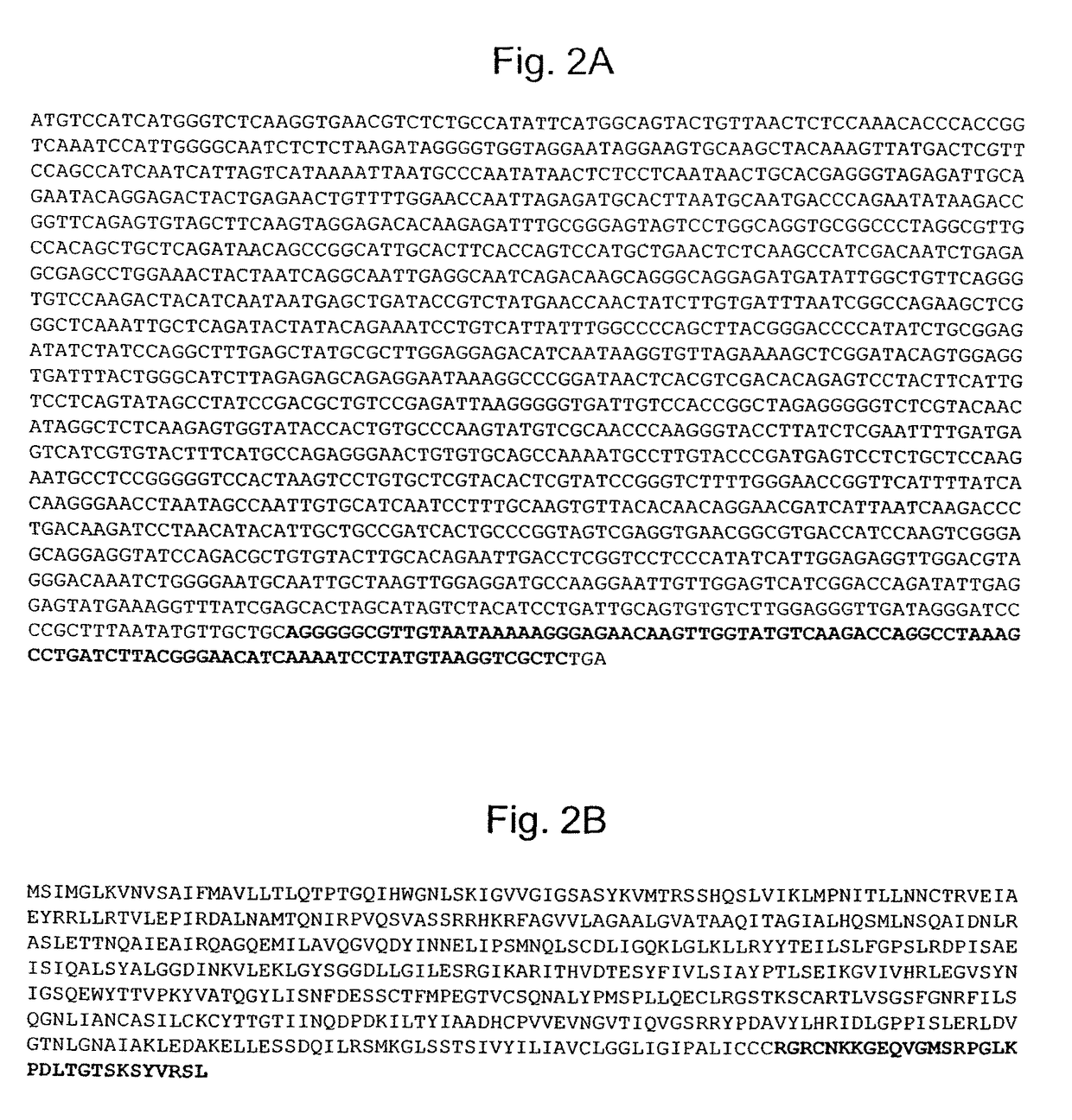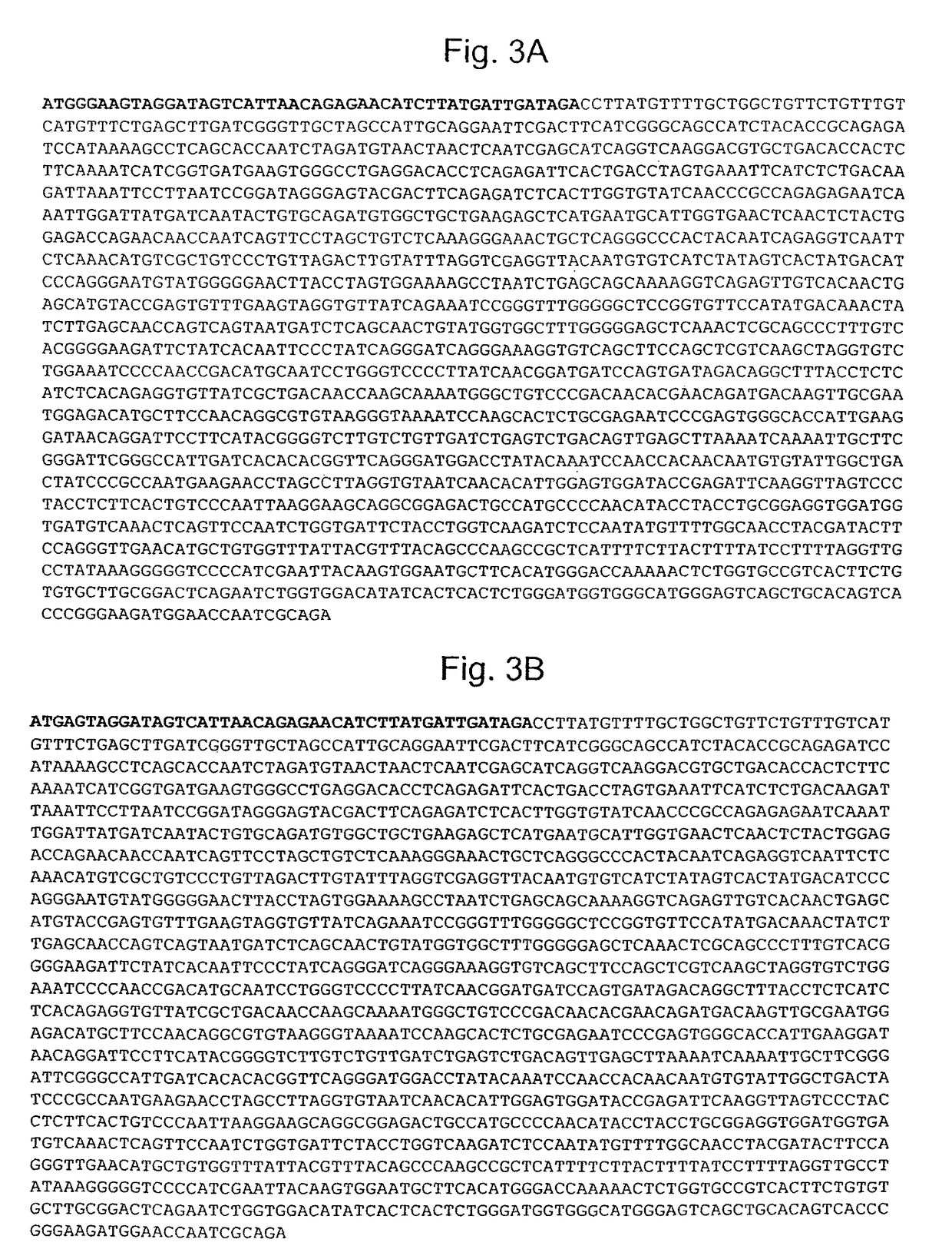Pseudotyping of retroviral vectors, methods for production and use thereof for targeted gene transfer and high throughput screening
a technology of retroviral vectors and pseudotypes, applied in the field of pseudotype of retroviral vectors, can solve the problems of reducing infectious-virus production, reducing the truncated h protein of rmev, and effectively using cd46 as a receptor, so as to improve the transduction efficiency of lentiviral vector particles, increase the titer and the effect of titer
- Summary
- Abstract
- Description
- Claims
- Application Information
AI Technical Summary
Benefits of technology
Problems solved by technology
Method used
Image
Examples
example 1
and Mutated MeV H and F Proteins
[0248]MeV F and H glycoproteins were inserted into the expression vector pCG under the control of the CMV early promoter as described by Cathomen et al. (1995) and various pCG-H and pCG-F vectors were constructed, wherein the H and F genes carried point mutations, deletions and insertions.
[0249]The truncated H protein genes were generated by PCR using pCG-H as a template. A forward primer complementary to coding region of the N terminus of the H protein gene was used. This primer encodes at its 5′ end the nucleotide sequence for the PacI restriction site followed by the start methionine triplet and the nucleotide sequence of the H protein cytoplasmic tail but omitting those triplets coding for the amino acids to be deleted. The reverse primer was complementary to coding region of the transmembrane domain of the H protein and comprises at its 5′ end the NheI restriction site sequence. For HcΔ18, for example, the primers were as follows: forward 5′-CCTT...
example 2
n, Isolation of Pseudotyped Lentiviral Virus Vector Particles and Titration Using HT1080 Cells
[0261]Pseudotyped lentiviral vector particles were produced by co-transfection of HEK-293T cells with a packaging plasmid, a transfer vector and the two plasmids encoding the H and F protein variants, respectively. The packaging plasmid pCMVΔR8.9 encoding the HIV-1 gag and pol genes is depicted in FIG. 11, as an example the transfer plasmid SEW (encoding for the eGFP) is depicted in FIG. 12, however, as disclosed also other transfer plasmids, such as pHRCMVGFP encoding a GFP reporter gene may be utilized.
[0262]Specifically, 24 h before transfection, 6.5×106 HEK-293T cells (in DMEM with 4.5 g / l glucose, 3.7 g / l NaHCO3, 10% FCS, 1% glutamine, 0.5% penicillin and streptomycin) were seeded into a T75 flask. 1 h before the transfection the medium of the cells was exchanged against 5 ml fresh medium. 4.0 μg of plasmid pCG-FcΔ30, encoding the MeV FcΔ30 protein and 4.0 μg of the plasmid pCG-HcΔ18, ...
example 3
of Lentiviral Vector Particles Using HEK-293T, U-87MG, A301 and A-431 Cells
[0274]To determine, whether other cells but HT1080 could efficiently and specifically be transduced by the pseudotyped lentiviral vector particles of the present invention, a set of further titration experiments using four further cell lines was carried out. Four representatives of the pseudotyped lentiviral vector particles of Example 2 were tested and titration was carried out as described before. For the transduction of HEK-293T cells (in DMEM with 4.5 g / l glucose, 3.7 g / l NaHCO3, 10% FCS, 1% glutamin, 0.5% penicillin / streptomycin) and U-87MG cells (in MEM with 0.85 g NaHCO3 / l, 1 ml / 100 ml glutamin, 1 ml / 100 ml not essential amino acids, 10 ml / 100 ml FCS, 1 ml / 30 ml bicarbonate, 1 ml / 100 ml pyruvate), 1.5×105 and 7.2×104 cells per well of a 24 well plate were used. For the transduction of A301 cells (in RPMI 1640 with 2 g / l NaHCO3, 10% FCS, 1% glutamin), A-431 cells (in DMEM with 4.5 g / l glucose, 3.7 g / l N...
PUM
| Property | Measurement | Unit |
|---|---|---|
| temperature | aaaaa | aaaaa |
| temperature | aaaaa | aaaaa |
| total volume | aaaaa | aaaaa |
Abstract
Description
Claims
Application Information
 Login to View More
Login to View More - R&D
- Intellectual Property
- Life Sciences
- Materials
- Tech Scout
- Unparalleled Data Quality
- Higher Quality Content
- 60% Fewer Hallucinations
Browse by: Latest US Patents, China's latest patents, Technical Efficacy Thesaurus, Application Domain, Technology Topic, Popular Technical Reports.
© 2025 PatSnap. All rights reserved.Legal|Privacy policy|Modern Slavery Act Transparency Statement|Sitemap|About US| Contact US: help@patsnap.com



